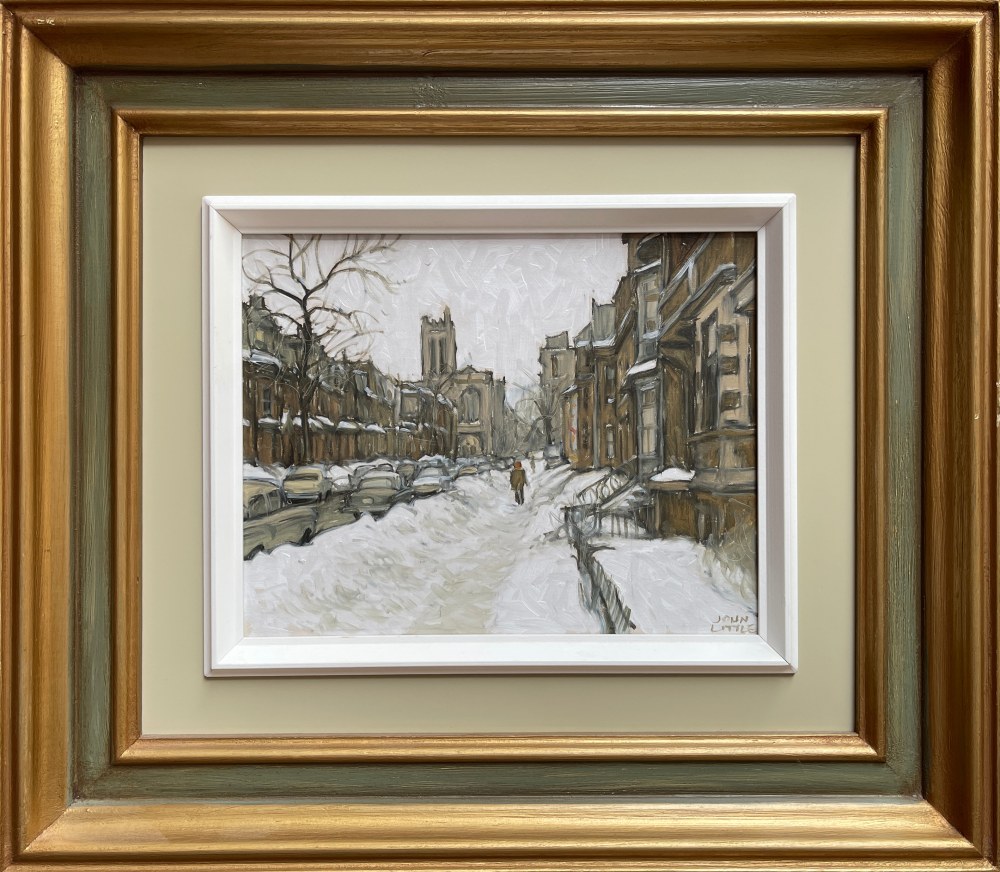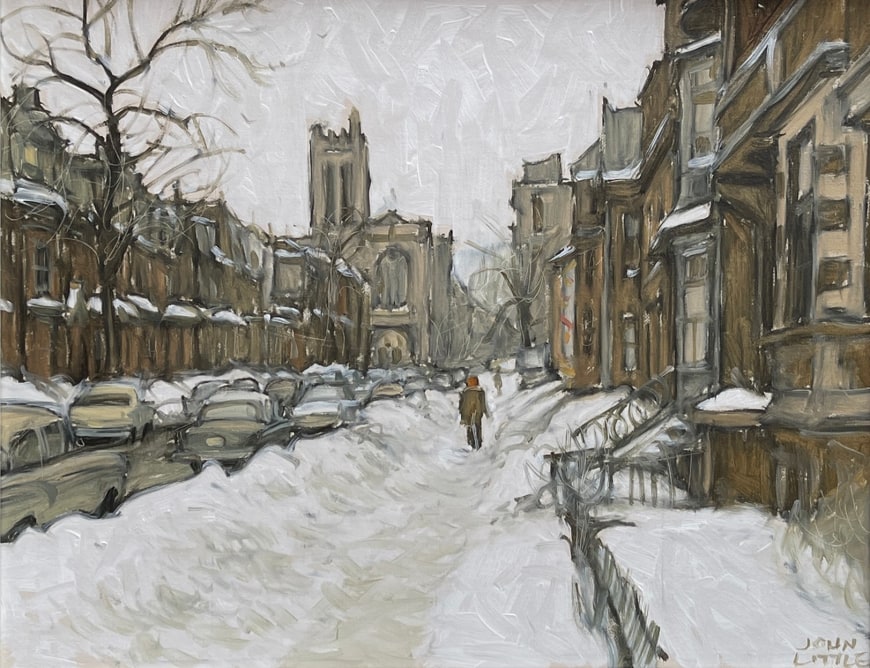-
Artworks
John LittleBishop Street in Better Days, 20041928-2024Oil on canvas8 1/8 x 10 1/8 in
20.5 x 25.5 cmSoldInscriptions
signed, ‘JOHN LITTLE’ (lower right); inscribed, titled and dated, ‘BISHOP STREET in BETTER DAYS / …before it was spoiled by Concordia U. MH. Museum / of Fine Arts and especially the banal bldg at S.W. corner of / Sherbrooke Street. From old sketchbook. / JOHN / LITTLE 2004/ Jock Hutchison….. / winner of the BRITISH OPEN… / ’92’ (verso)Provenance
Private collection, Town of Mount Royal, Quebec, acquired directly from the artist
This composition describes a snowy view looking north up Bishop Street, above Montreal’s de Maisonneuve Boulevard toward Sherbrooke Street where on the left hand side is a view of The Church of St Andrew and St Paul and, on the right the west wall of The Montreal Museum of Fine Arts. Significantly, the painting was owned by a friend and neighbour of the artist who served as an elder at the Church. His mention of Jock Hutchison is simply one of his tributes to an athlete who may have enjoyed fame, great or less so, years ago. In addition to athletes, for the most part hockey , football or baseball players and wrestlers too, he occasionally makes a mention of a musician, usually jazz . In this particular case, Little’s friend who acquired the painting from him directly was named Hutchison. The artist created a link to a namesake but one who was not a relative.
The Church of St Andrew and St Paul is located diagonally across the street from the present location of Galerie Alan Klinkhoff.
_________________
The 1950s and ‘60s were extremely important decades in the social and economic history of Quebec and Montreal.
The World Fair (Expo 67) and the Olympics (Summer 1976) became catalysts to invest in development projects including a massive demolition of older buildings, streets and even neighbourhoods in the city accompanied by equally massive development of the suburbs in all directions outside of the city core, major investments in highway infrastructure, the Montreal metro system, Place des Arts, Place Ville Marie, Place Bonaventure, and the Port Royal among other major landmarks. This period of rapid development was prosperous for the city however, many projects were considered controversial at the time, and remain so today.
From his earliest days as an artist Little had taken a keen and critical interest in development projects underway during this period of transformation. His work often reflected his desire to preserve the streets. As an artist the best he could do was to preserve the memories of the various streets and neighbourhoods before major projects eradicated them forever. Little would regularly find inspiration in the announcements of new developments of apartment complexes, parks, commercial buildings and highways and also observation of demolition of small buildings , even houses of vintage, motivated him to paint them a particular area for the only conservation he could offer. As the “material” of interest for Little to paint disappeared from the urban landscape , Little revisited his archives of photographs and sketches and found renewed inspiration compositing work from those sources.
Occasionally, Little would offer critical insight into his intent by leaving a remark on the back of a particular painting, citing the subject being as it appeared “in happier times” or “before the construction” of a certain building. See the inscription on the reverse of the painting below as an excellent example.













